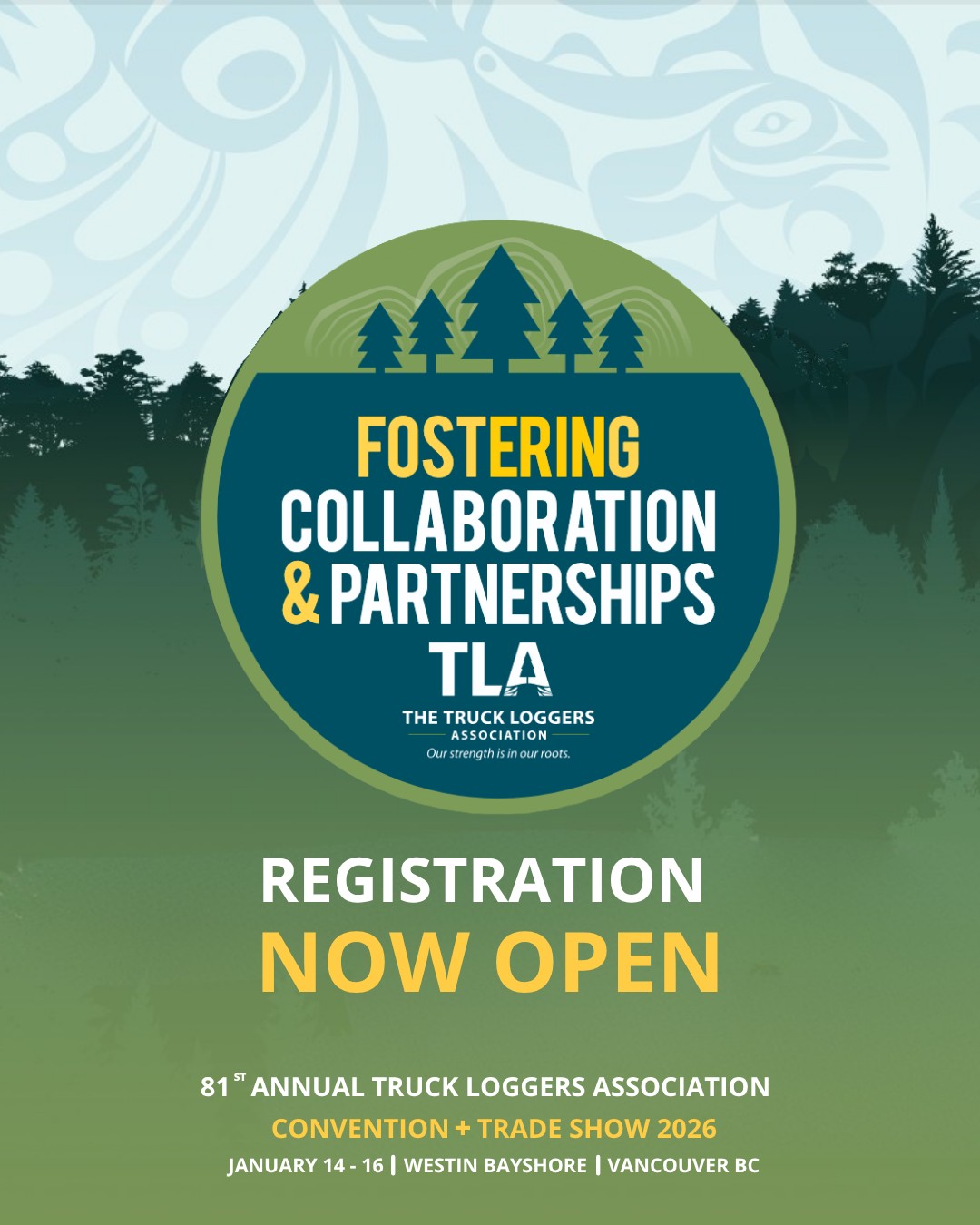 For more than 80 years, the annual TLA Convention + Trade Show has been the premier gathering place for forestry’s top decision-makers. Whether you choose to sponsor the convention or exhibit at the trade show, your participation offers unmatched opportunities to connect, showcase, and grow your business. Unparalleled Networking: The TLA Convention + Trade Show brings together the leaders who shape the future of BC’s forest industry. As a sponsor or exhibitor, you’ll gain direct access to influential professionals—contractors, suppliers, government representatives, and business owners—all in one place. …Premium Brand Exposure: Visibility at the TLA Convention & Trade Show extends well beyond the event.
For more than 80 years, the annual TLA Convention + Trade Show has been the premier gathering place for forestry’s top decision-makers. Whether you choose to sponsor the convention or exhibit at the trade show, your participation offers unmatched opportunities to connect, showcase, and grow your business. Unparalleled Networking: The TLA Convention + Trade Show brings together the leaders who shape the future of BC’s forest industry. As a sponsor or exhibitor, you’ll gain direct access to influential professionals—contractors, suppliers, government representatives, and business owners—all in one place. …Premium Brand Exposure: Visibility at the TLA Convention & Trade Show extends well beyond the event. Sponsors enjoy high-profile recognition before, during, and after the convention, ensuring your brand stays top of mind among key industry players. Tracey Russell, Vice President-Equipment, Inland Truck & Equipment Ltd. is a regular at the Convention, “We sponsor the TLA Convention + Trade Show every year because it’s one of the best opportunities for exposure and relationship building – connections that have made a lasting impact on our business and our brand.”
Sponsors enjoy high-profile recognition before, during, and after the convention, ensuring your brand stays top of mind among key industry players. Tracey Russell, Vice President-Equipment, Inland Truck & Equipment Ltd. is a regular at the Convention, “We sponsor the TLA Convention + Trade Show every year because it’s one of the best opportunities for exposure and relationship building – connections that have made a lasting impact on our business and our brand.”
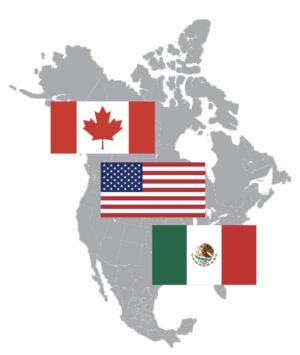 WASHINGTON — American industries ranging from whiskey makers and Wisconsin dairy producers to steel and automobile associations are weighing in on the future of the Canada-U.S.-Mexico Agreement on trade. The continental trade pact, known as CUSMA, is up for mandatory review next year and the Office of the United States Trade Representative has been collecting input on the changes it should consider. CUSMA has been rattled by U.S. President Trump’s massive tariff agenda and many of the submissions urged the administration to restore duty-free trade. The Can Manufacturers Institute wrote to the Trump administration saying steel and aluminum tariffs on Canada are making their products more expensive and causing prices in grocery stores to increase. …The United States Steel Corporation said tariffs on that metal should remain indefinitely. The submissions provide insight into areas that could become irritants in looming negotiations on the critical trilateral trade pact.
WASHINGTON — American industries ranging from whiskey makers and Wisconsin dairy producers to steel and automobile associations are weighing in on the future of the Canada-U.S.-Mexico Agreement on trade. The continental trade pact, known as CUSMA, is up for mandatory review next year and the Office of the United States Trade Representative has been collecting input on the changes it should consider. CUSMA has been rattled by U.S. President Trump’s massive tariff agenda and many of the submissions urged the administration to restore duty-free trade. The Can Manufacturers Institute wrote to the Trump administration saying steel and aluminum tariffs on Canada are making their products more expensive and causing prices in grocery stores to increase. …The United States Steel Corporation said tariffs on that metal should remain indefinitely. The submissions provide insight into areas that could become irritants in looming negotiations on the critical trilateral trade pact. President Donald Trump has yet to follow through on his threat to impose an additional 10 percent tariff on Canadian imports, four weeks after he halted “all trade negotiations” over an anti-tariff ad the province of Ontario ran. Trump’s announcement had Canadian exporters preparing for a worst-case scenario: a sweeping levy layered on top of existing double-digit duties. …The White House did not say whether it still plans to impose the tariff when asked for comment. But a separate US official suggested the Trump administration had opted to hold off on additional duties — which would have sent tariffs on Canadian goods to 45% — and instead continue to dangle the threat as the two sides gear up for future talks. “The Canadians know what’s on the table,” said the official. Volpe said a personal intervention by Carney in Asia last month may have helped matters, too.
President Donald Trump has yet to follow through on his threat to impose an additional 10 percent tariff on Canadian imports, four weeks after he halted “all trade negotiations” over an anti-tariff ad the province of Ontario ran. Trump’s announcement had Canadian exporters preparing for a worst-case scenario: a sweeping levy layered on top of existing double-digit duties. …The White House did not say whether it still plans to impose the tariff when asked for comment. But a separate US official suggested the Trump administration had opted to hold off on additional duties — which would have sent tariffs on Canadian goods to 45% — and instead continue to dangle the threat as the two sides gear up for future talks. “The Canadians know what’s on the table,” said the official. Volpe said a personal intervention by Carney in Asia last month may have helped matters, too.
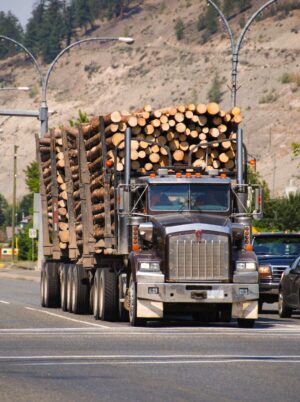 The looming closure of a lumber mill in central BC is highlighting the forestry industry’s challenges in accessing an economically viable timber supply — with one academic urging an “emergency response” to deal with it. West Fraser Timber announced it would shut its mill in 100 Mile House by the end of the year. BC’s forestry industry has taken major hits over the last few years, as escalating US duties on softwood lumber imports have piled atop challenges like a major beetle infestation and wildfires, leading to thousands of jobs lost. …UBC professor Gary Bull explained that to have an “economically viable fibre supply,” it needs to make sense financially for a company to transport logs from a forest to its mill. And the viability is complicated by the fluctuating price of lumber. …Bull estimated that insect outbreaks and wildfires have contributed to a 50 to 60 per cent reduction in available fibre near 100 Mile House.
The looming closure of a lumber mill in central BC is highlighting the forestry industry’s challenges in accessing an economically viable timber supply — with one academic urging an “emergency response” to deal with it. West Fraser Timber announced it would shut its mill in 100 Mile House by the end of the year. BC’s forestry industry has taken major hits over the last few years, as escalating US duties on softwood lumber imports have piled atop challenges like a major beetle infestation and wildfires, leading to thousands of jobs lost. …UBC professor Gary Bull explained that to have an “economically viable fibre supply,” it needs to make sense financially for a company to transport logs from a forest to its mill. And the viability is complicated by the fluctuating price of lumber. …Bull estimated that insect outbreaks and wildfires have contributed to a 50 to 60 per cent reduction in available fibre near 100 Mile House.

 “The BCIT School of Construction and the Environment offers two Associate Certificate programs designed to support workforce development in the North American lumber and sawmill sector:
“The BCIT School of Construction and the Environment offers two Associate Certificate programs designed to support workforce development in the North American lumber and sawmill sector: 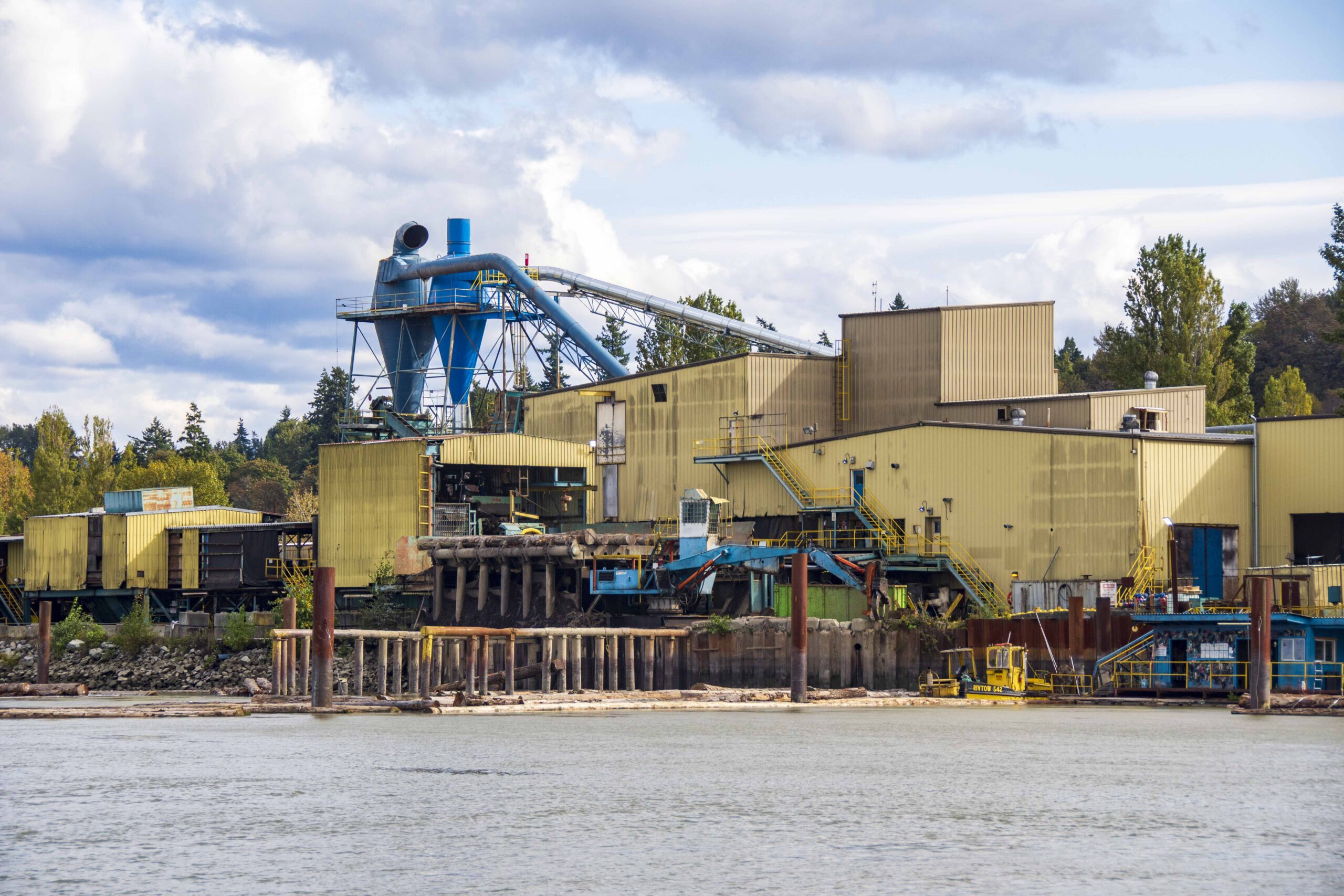 VANCOUVER, BC — A large fire broke out on the banks of the Fraser River in Delta on Thursday morning. Fire crews from Delta and Surrey were called between 9 a.m. and 10 a.m. to the former sawmill under demolition north of the Alex Fraser Bridge on Alaska Way. The land is owned by the Port of Vancouver and the organization confirmed the fire is at the site of the former mill. There are currently no impacts to port operations. …The fire broke out on the site of the former Acorn mill, which stopped operations after a blaze in April 2024. The sawmill was built in 1963 and was acquired by forestry giant Interfor in 2001. It was used primarily to cut specialty timber for traditional Japanese home construction. In 2022,
VANCOUVER, BC — A large fire broke out on the banks of the Fraser River in Delta on Thursday morning. Fire crews from Delta and Surrey were called between 9 a.m. and 10 a.m. to the former sawmill under demolition north of the Alex Fraser Bridge on Alaska Way. The land is owned by the Port of Vancouver and the organization confirmed the fire is at the site of the former mill. There are currently no impacts to port operations. …The fire broke out on the site of the former Acorn mill, which stopped operations after a blaze in April 2024. The sawmill was built in 1963 and was acquired by forestry giant Interfor in 2001. It was used primarily to cut specialty timber for traditional Japanese home construction. In 2022, 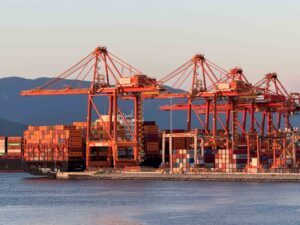 The BC NDP’s new
The BC NDP’s new  Delegates from B.C.’s largest forestry trade mission to Asia have returned home, bringing back business deals, signed agreements and deeper ties with key trading partners in Japan and South Korea, driving growth and investment for B.C.
Delegates from B.C.’s largest forestry trade mission to Asia have returned home, bringing back business deals, signed agreements and deeper ties with key trading partners in Japan and South Korea, driving growth and investment for B.C.
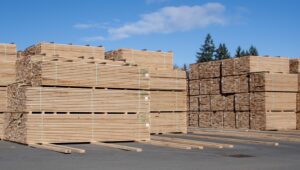 Pierre Poilievre says he’d succeed where Prime Minister Mark Carney has failed, and that New Brunswick’s softwood lumber sector would quickly get a “tariff-free” deal with the US if he was in charge. …Ottawa responded by releasing a financial aid package for the industry that includes up to $700 million in federal loans, “$500 million to supercharge product and market diversification. …Poilievre said that “one of my top priorities as prime minister will be to go down to Washington, get a deal on lumber, make the pitch that they will get more affordable homes if we can get tariff-free access to their market.” …MP Dominic LeBlanc sent a statement…. “In the coming weeks, we will take further urgent action, building on the significant support for the sector announced on August 5, 2025. In addition, Build Canada Homes, a new federal agency that will build affordable housing at scale, will prioritize the use of Canadian-made materials. [Access may require a Telegraph-Journal subscription]
Pierre Poilievre says he’d succeed where Prime Minister Mark Carney has failed, and that New Brunswick’s softwood lumber sector would quickly get a “tariff-free” deal with the US if he was in charge. …Ottawa responded by releasing a financial aid package for the industry that includes up to $700 million in federal loans, “$500 million to supercharge product and market diversification. …Poilievre said that “one of my top priorities as prime minister will be to go down to Washington, get a deal on lumber, make the pitch that they will get more affordable homes if we can get tariff-free access to their market.” …MP Dominic LeBlanc sent a statement…. “In the coming weeks, we will take further urgent action, building on the significant support for the sector announced on August 5, 2025. In addition, Build Canada Homes, a new federal agency that will build affordable housing at scale, will prioritize the use of Canadian-made materials. [Access may require a Telegraph-Journal subscription]
 The Nova Scotia Forestry Innovation Transition Trust is investing $1.8 million to assist private landowners and forest contractors in finding new markets for underutilized wood fibre and to support sustainable forestry management. According to a
The Nova Scotia Forestry Innovation Transition Trust is investing $1.8 million to assist private landowners and forest contractors in finding new markets for underutilized wood fibre and to support sustainable forestry management. According to a 


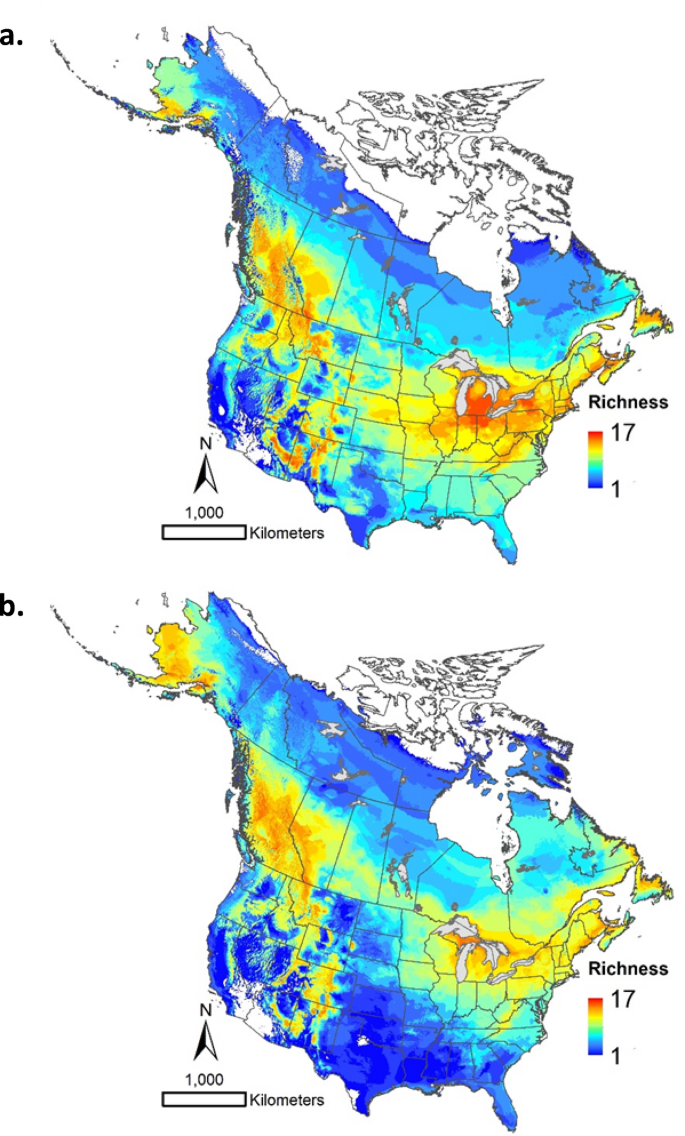
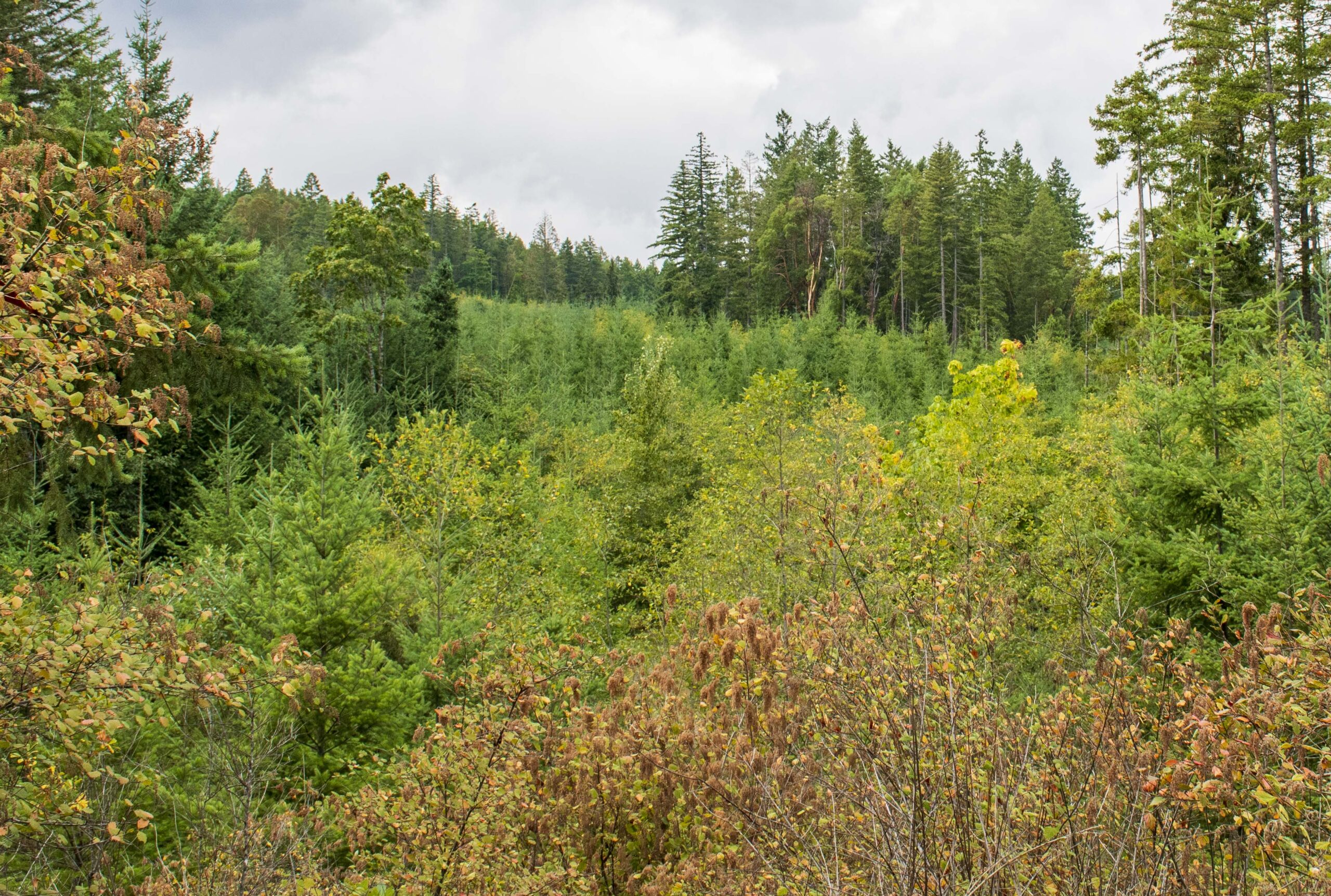 A First Nation in north-central B.C. says it is banning the use of herbicides across all of its territory, which includes Prince George and the Robson Valley. The Lheidli T’enneh First Nation says the ban is being put into place because of the negative impacts herbicides, and glyphosate in particular, have had on the environment and wildlife for which they are stewards. “It is our duty to disallow toxic chemicals in our territory that reduce biodiversity and have negative impacts on our members’ health, wellbeing and the environment where we exercise our living rights and traditions,” Lheidli T’enneh Elected Chief Dolleen Logan said in a statement. She also says the nation expects both government and private industry workers operating in the region to adhere to the ban. It was not immediately clear if the ban would also apply to private and municipal property. More details coming Tuesday morning.
A First Nation in north-central B.C. says it is banning the use of herbicides across all of its territory, which includes Prince George and the Robson Valley. The Lheidli T’enneh First Nation says the ban is being put into place because of the negative impacts herbicides, and glyphosate in particular, have had on the environment and wildlife for which they are stewards. “It is our duty to disallow toxic chemicals in our territory that reduce biodiversity and have negative impacts on our members’ health, wellbeing and the environment where we exercise our living rights and traditions,” Lheidli T’enneh Elected Chief Dolleen Logan said in a statement. She also says the nation expects both government and private industry workers operating in the region to adhere to the ban. It was not immediately clear if the ban would also apply to private and municipal property. More details coming Tuesday morning. The new allowable annual cut (AAC) for Tree Farm Licence (TFL) 49 near Vernon has been chopped. The cut, which is the maximum amount of timber that can be harvested each year, is now 150,500 cubic metres, and takes effect immediately. That’s a 26.2% reduction from the previous AAC. “That decision reflects a return to sustainable harvest levels following wildfire impacts in 2021 and 2023,” said the
The new allowable annual cut (AAC) for Tree Farm Licence (TFL) 49 near Vernon has been chopped. The cut, which is the maximum amount of timber that can be harvested each year, is now 150,500 cubic metres, and takes effect immediately. That’s a 26.2% reduction from the previous AAC. “That decision reflects a return to sustainable harvest levels following wildfire impacts in 2021 and 2023,” said the 
 The return of cold and snow at the close of the year typically signal the end of the wildfire season. …Zombie fires, sometimes betrayed by a plume of steam emerging from the bubbling ground in the frozen forest, were once a rare occurrence in the boreal regions that stretch across the far north through Siberia, Canada and Alaska. But in a rapidly heating world, they are becoming increasingly common. The overwintering burns are small – and often hard to detect – but they are transforming fires into multi-year events. …“It is a massive problem,” says Lori Daniels, a professor at the University of BC. Current estimates show that only about 15% of the northern hemisphere is underlain by permafrost, yet these frozen soils contain roughly twice as much carbon than is now in the atmosphere. By burning slowly and at a lower temperature, they release vastly more particulate pollution and greenhouse gas emissions than flaming fires.
The return of cold and snow at the close of the year typically signal the end of the wildfire season. …Zombie fires, sometimes betrayed by a plume of steam emerging from the bubbling ground in the frozen forest, were once a rare occurrence in the boreal regions that stretch across the far north through Siberia, Canada and Alaska. But in a rapidly heating world, they are becoming increasingly common. The overwintering burns are small – and often hard to detect – but they are transforming fires into multi-year events. …“It is a massive problem,” says Lori Daniels, a professor at the University of BC. Current estimates show that only about 15% of the northern hemisphere is underlain by permafrost, yet these frozen soils contain roughly twice as much carbon than is now in the atmosphere. By burning slowly and at a lower temperature, they release vastly more particulate pollution and greenhouse gas emissions than flaming fires.


 The crowd stretched from the doors of City Hall to the Ward Street sidewalk in Nelson to hear guest speaker David Suzuki and other forest ecology advocates at a rally held Nov. 18 in Nelson. …The Broken Promises rally was held simultaneously in Nelson, Victoria, Vernon, Revelstoke, Smithers, Courtenay, Parksville, and Powell River to protest what is seen as provincial government backtracking on the protection of old growth forests, biodiversity and watersheds, and continuing with timber volume as the only priority. …Speaker Suzanne Simard said failure to use that foresight, to respect all life and give back more than we receive, has resulted in climate change, biodiversity loss, and land degradation. …She said the province should stop clearcutting and creating tree plantations that are flammable and subject to erosion. …Slocan Valley ecologist and forester Herb Hammond spoke about secondary forests… That’s where we should get our wood and our employment…
The crowd stretched from the doors of City Hall to the Ward Street sidewalk in Nelson to hear guest speaker David Suzuki and other forest ecology advocates at a rally held Nov. 18 in Nelson. …The Broken Promises rally was held simultaneously in Nelson, Victoria, Vernon, Revelstoke, Smithers, Courtenay, Parksville, and Powell River to protest what is seen as provincial government backtracking on the protection of old growth forests, biodiversity and watersheds, and continuing with timber volume as the only priority. …Speaker Suzanne Simard said failure to use that foresight, to respect all life and give back more than we receive, has resulted in climate change, biodiversity loss, and land degradation. …She said the province should stop clearcutting and creating tree plantations that are flammable and subject to erosion. …Slocan Valley ecologist and forester Herb Hammond spoke about secondary forests… That’s where we should get our wood and our employment…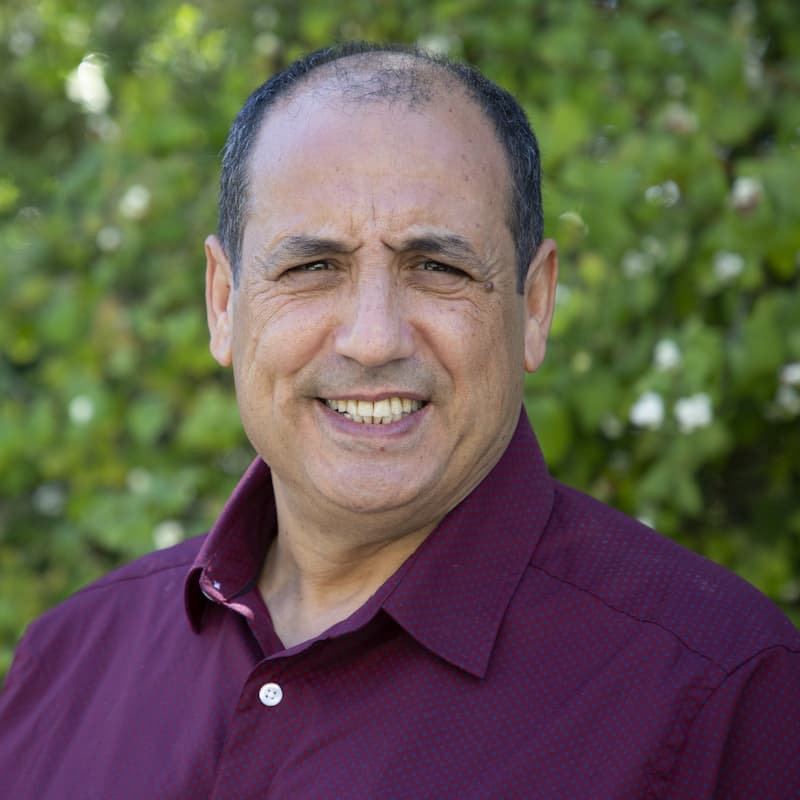
 OTTAWA — The Carney government will still pay to help plant a previously announced 52 million trees in New Brunswick, even though hardly any of them are in the ground and the program’s funding has been cancelled. The recent federal budget scrapped a program to plant two billion trees across the country by 2031 in order to find hundreds of millions of dollars in savings. It was a climate change initiative first announced by former Prime Minister Justin Trudeau during the 2019 election campaign with $3.2 billion over 10 years earmarked to carry it out. New Brunswick was one of the last provinces to reach an agreement for its cut of that money. It didn’t sign on until March 2024. A few months after that, the feds and the New Brunswick government announced $71.6 million to plant more than 52 million trees on Crown lands across the province over the next eight years. [A Telegraph-Journal subscription is required for full access]
OTTAWA — The Carney government will still pay to help plant a previously announced 52 million trees in New Brunswick, even though hardly any of them are in the ground and the program’s funding has been cancelled. The recent federal budget scrapped a program to plant two billion trees across the country by 2031 in order to find hundreds of millions of dollars in savings. It was a climate change initiative first announced by former Prime Minister Justin Trudeau during the 2019 election campaign with $3.2 billion over 10 years earmarked to carry it out. New Brunswick was one of the last provinces to reach an agreement for its cut of that money. It didn’t sign on until March 2024. A few months after that, the feds and the New Brunswick government announced $71.6 million to plant more than 52 million trees on Crown lands across the province over the next eight years. [A Telegraph-Journal subscription is required for full access]

 Canada’s latest federal budget has earmarked tens of billion dollars over the next decade to kick-start the country’s clean economy. But according to a national association of accountants, it has failed to adopt national climate disclosure standards to transparently assess what will work. The latest federal budget lays out federal government spending through a new Climate Competitiveness Strategy. It earmarks a rolling $2 billion toward a Critical Minerals Sovereign Fund and $6 billion for a Build Communities Stronger Fund (over 10 years) to build and retrofit local infrastructure and clean energy projects. …It also seeks to create and expand investment tax credits for clean electricity, technology and critical minerals. …But on Tuesday, Chartered Professional Accountants Canada CEO Pamela Steer warned the lack of consistent and verifiable financial disclosure measures means there’s no reliable way to understand how government spending truly reduces emissions.
Canada’s latest federal budget has earmarked tens of billion dollars over the next decade to kick-start the country’s clean economy. But according to a national association of accountants, it has failed to adopt national climate disclosure standards to transparently assess what will work. The latest federal budget lays out federal government spending through a new Climate Competitiveness Strategy. It earmarks a rolling $2 billion toward a Critical Minerals Sovereign Fund and $6 billion for a Build Communities Stronger Fund (over 10 years) to build and retrofit local infrastructure and clean energy projects. …It also seeks to create and expand investment tax credits for clean electricity, technology and critical minerals. …But on Tuesday, Chartered Professional Accountants Canada CEO Pamela Steer warned the lack of consistent and verifiable financial disclosure measures means there’s no reliable way to understand how government spending truly reduces emissions. Greenwashing experts are cautiously optimistic that Ottawa’s plan to roll back nearly half of Canada’s anti-greenwashing rules does not represent a wholesale abandonment of federal efforts to curb climate disinformation following comments by Finance Minister François-Philippe Champagne. …Champagne did not elaborate on what could be included in the standard. A Department of Finance official told Canada’s National Observer in a statement that the “provisions are creating investment uncertainty and having the opposite of the desired effect with some parties slowing or reversing efforts to protect the environment.” …Announced this month in the 2026 budget, the changes ditched a requirement that companies prove their green claims using international, though unspecified, standards. The changes also prevent third parties from filing a greenwashing complaint with the Competition Bureau. …The budget claims the provisions were “creating investment uncertainty and having the opposite of the desired effect with some parties slowing or reversing efforts to protect the environment.” [A National Observer subscription may be required for story access]
Greenwashing experts are cautiously optimistic that Ottawa’s plan to roll back nearly half of Canada’s anti-greenwashing rules does not represent a wholesale abandonment of federal efforts to curb climate disinformation following comments by Finance Minister François-Philippe Champagne. …Champagne did not elaborate on what could be included in the standard. A Department of Finance official told Canada’s National Observer in a statement that the “provisions are creating investment uncertainty and having the opposite of the desired effect with some parties slowing or reversing efforts to protect the environment.” …Announced this month in the 2026 budget, the changes ditched a requirement that companies prove their green claims using international, though unspecified, standards. The changes also prevent third parties from filing a greenwashing complaint with the Competition Bureau. …The budget claims the provisions were “creating investment uncertainty and having the opposite of the desired effect with some parties slowing or reversing efforts to protect the environment.” [A National Observer subscription may be required for story access]

 In this newsletter you find these stories and more:
In this newsletter you find these stories and more: